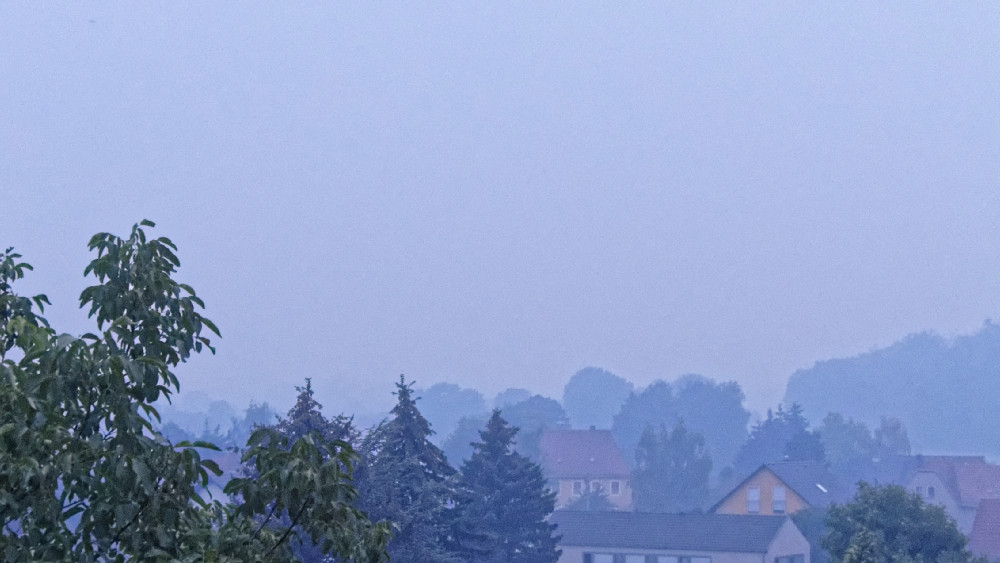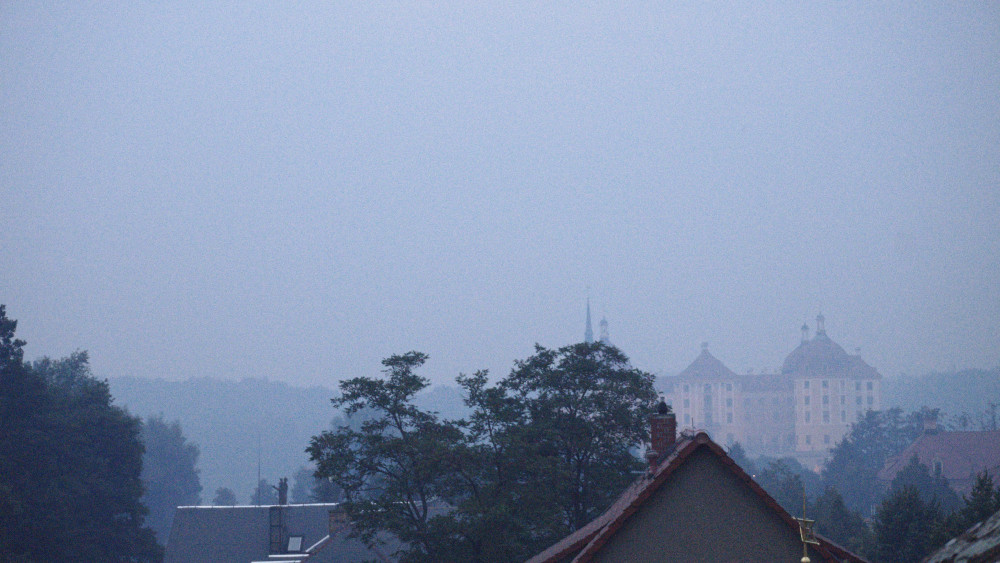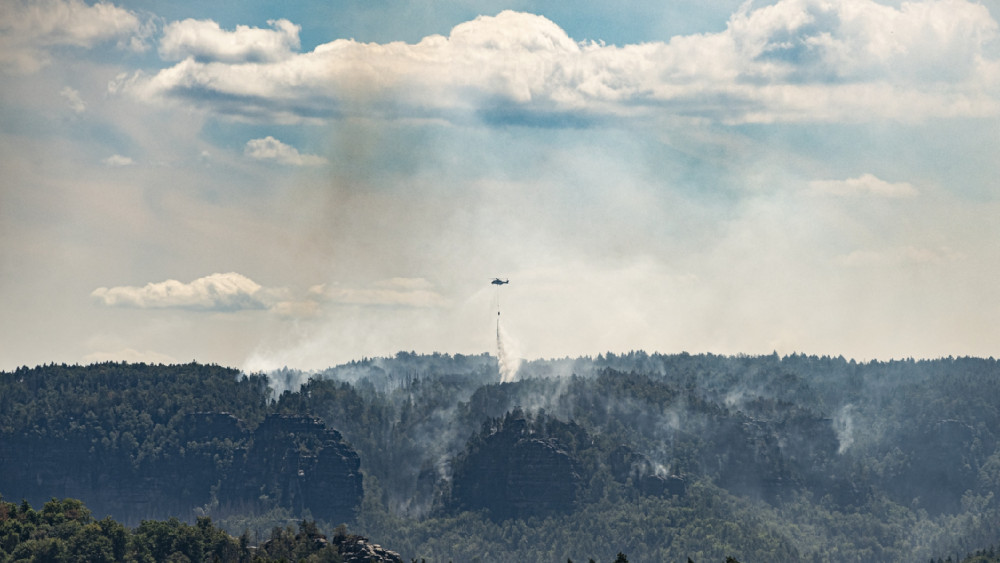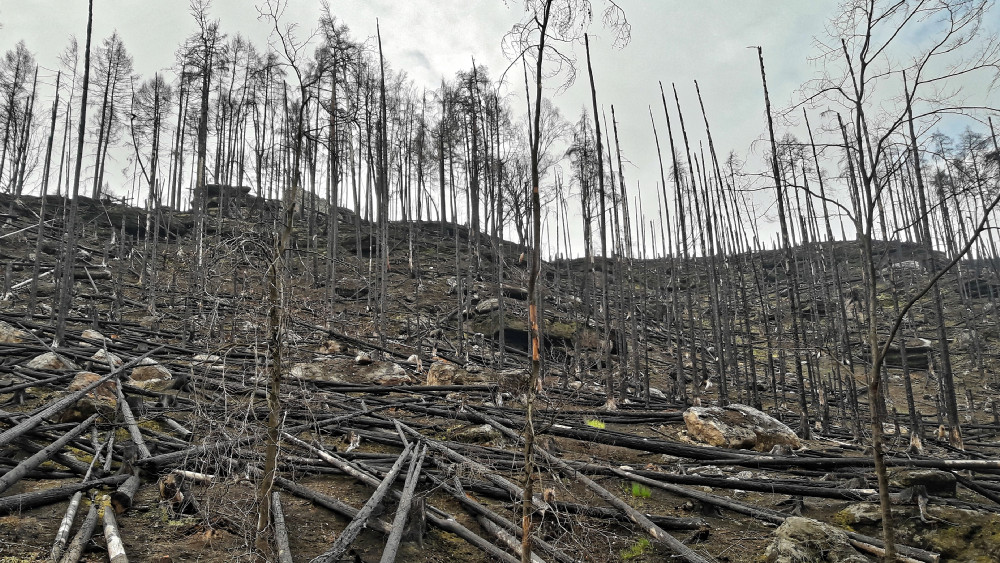New Leibniz Science Campus researches wild fires and climate
Leipzig,
20.03.2024
Smoke at the centre of the joint project
Leipzig. Over the next four years, a new joint project will investigate the links between wild fires and climate change. The Leibniz ScienceCampus "Smoke and Bioaerosols in Climate Change" brings together expertise in atmospheric and biodiversity research from Leipzig University, on aerosols, clouds and atmospheric processes from the Leibniz Institute for Tropospheric Research (TROPOS), on biomass combustion from the German Biomass Research Centre (DBFZ) and on water and energy cycles from the Helmholtz Centre for Environmental Research (UFZ). Leibniz ScienceCampi serve the strategic networking of Leibniz institutes with universities and other co-operation partners in the region under a thematic focus.
The Leibniz Association funds these collaborations for a maximum of eight years. The new Leibniz Science Campus led by TROPOS is the second of its kind in Leipzig: since 2016, the "Eastern Europe - Global Area (EEGA)" Science Campus, led by the Leibniz Institute for Regional Geography (IfL), is investigating globalisation processes in Eastern Europe.
Interactions between the atmosphere and the biosphere are poorly understood, particularly in the context of rapid climate change. Droughts caused by more frequent climate extremes increase the risk of wild fires. Such fires and the resulting smoke particles and gases have an impact on air quality, the Earth's radiation balance and vegetation patterns in affected regions.
Wild fires and the resulting changes in vegetation also influence the emission of primary biological aerosol particles, which, due to their properties, can affect the formation of cloud droplets, cloud ice and precipitation. Understanding the relationships between the type of vegetation, the emission of smoke and the primary biological aerosol particles as well as the atmospheric distribution of these particles and gases is also one of the prerequisites for understanding future changes in the atmosphere.
The combined expertise from various scientific disciplines is required to be able to research the processes in the interconnected atmosphere-climate-vegetation system. The Leibniz ScienceCampus "Smoke and Bioaerosols in Climate Change" (LSC BioSmoke) therefore brings together the outstanding expertise on atmospheric and biodiversity research at Leipzig University, on aerosols, clouds and atmospheric processes at TROPOS, on biomass combustion analysis at the DBFZ and on water and energy cycles at the UFZ in order to clarify the controlling factors and the effects of the release of aerosol particles from vegetation. To this end, the projects within the LSC include combustion experiments in the laboratory, field measurements of aerosol properties in connection with vegetation fires and remote sensing and modelling of particle emission, transport and atmospheric effects. The network can also draw on extensive data from measurement campaigns conducted by the German research aircraft HALO, which investigated the smoke plumes from wild fires in South America, Asia, Australia and Europe - most recently during the HALO CAFE-Pacific mission in January/February 2024. The researchers from Leipzig are also planning new measurement campaigns. For example, a field experiment in Spain for summer 2025 will take place in close cooperation with researchers from the University of Castilla - La Mancha, who carry out and analyse controlled fires on specific fields in Castile twice a year.
"Vegetation fires have long been studied in the field of fire ecology. Atmospheric research has also been studying the effects of aerosols, such as smoke particles, on climate and weather for many years. Until now, both disciplines have largely worked separately from each other. By pooling expertise in the atmospheric and vegetation sciences, which is currently located in various research institutions in Leipzig, the planned Leibniz ScienceCampus aims to create a highly visible regional research network. The interdisciplinary investigation of fire-related emissions, atmospheric transport and climate processes will contribute to a better understanding of the effects and interactions of aerosol particles from vegetation," explains Professor Dr Ina Tegen from TROPOS and Leipzig University, who is the spokesperson for the new ScienceCampus.
The researchers want to record the effects in three sub-projects: Firstly, the properties of smoke particles during the combustion of different plant species under controlled laboratory conditions and ageing processes under field conditions will be investigated. Secondly, atmospheric transport and changes in the particles will be investigated using process and transport modelling. Finally, the effects on radiation, clouds and vegetation will be derived from satellite observations and remote sensing from the ground.
The consortium can rely on an extensive infrastructure: from atmospheric chambers such as the ACD-Chamber and laboratories for the combustion of various types of biomass to several experimental platforms and observatories such as the Melpitz research station near Torgau or the PollyNet lidar network to the HALO research aircraft or global vegetation databases such as TRY and sPlot.
"I am delighted that, after 'Eastern Europe - Global Area', Leipzig will now be home to a second Leibniz Science Campus. Institutions such as TROPOS, our Institute of Meteorology and iDiv are among the international leaders in research into the cloud-aerosol-radiation and biodiversity complex. Their collaboration will be further intensified. In addition to the new Leibniz ScienceCampus, interdisciplinary research on the link between biodiversity and climate change has been established in Leipzig for some time. The collaborative projects also include a planned Cluster of Excellence as part of the Excellence Strategy of the German federal and state governments," emphasises Professor Dr Eva Inés Obergfell, Rector of Leipzig University.
Leibniz ScienceCampi enable Leibniz institutes and universities to collaborate on a topic in the sense of a regional partnership. The aim is to create networks in order to further develop the respective research area and strengthen the scientific environment. Leibniz ScienceCampi conduct strategic research, promote interdisciplinarity, make the respective location visible and strengthen its research profile. The funded projects should not only be characterised by their particular scientific quality, but also by their social relevance. The budget of around 900,000 euros per year is usually shared equally between the Leibniz Association, the university and the Leibniz Institute submitting the application. If the assessment is positive after the first funding phase of four years, Leibniz ScienceCampi can be extended and funded for a further four years.
Press release of the Leibniz Association (in German):
https://idw-online.de/de/news830592
Contacts for the media:
Prof Dr Ina Tegen
Head of the Department of Atmospheric Process Modelling, Leibniz Institute for Tropospheric Research (TROPOS) and Leipzig University
Phone +49 341 2717-7042
https://www.tropos.de/institut/ueber-uns/mitarbeitende/ina-tegen
and
Prof Dr Manfred Wendisch
Head, Institute for Meteorology, University of Leipzig
Phone +49 341 97-32850
https://www.uni-leipzig.de/personenprofil/mitarbeiter/prof-dr-manfred-wendisch
and
Prof Dr Christian Wirth
Head, Special Botany & Functional Biodiversity Group, Institute of Biology, Leipzig University
Phone +49 341 97-38591
https://www.uni-leipzig.de/personenprofil/mitarbeiter/prof-dr-christian-wirth
or
Tilo Arnhold, TROPOS Public Relations
Phone +49 341 2717-7189
http://www.tropos.de/aktuelles/pressemitteilungen/
and
Media Editorial Office, University Communications Office, Leipzig University,
Tel.: +49-341-97-35025
https://www.uni-leipzig.de/universitaet/service/medien-und-kommunikation
Further information and links:
Leibniz ScienceCampi: https://www.leibniz-gemeinschaft.de/forschung/leibniz-wissenschaftscampi
Leipzig University's Cluster of Excellence initiative "Breathing Nature": https://www.uni-leipzig.de/forschung/exzellenz-in-der-forschung/breathing-nature & www.uni-leipzig.de/newsdetail/artikel/universitaet-leipzig-nimmt-erste-huerde-im-exzellenzwettbewerb-zwei-vollantraege-duerfen-eingereicht-werden-2024-02-02
Infrastructure:
Atmospheric Chemistry Department - Chamber (ADC-C): https://www.tropos.de/institut/abteilungen/chemie-der-atmosphaere/laborexperimente/aerosolkammerexperimente
Thermo-chemical Conversion Division of the DBFZ: https://www.dbfz.de/dienstleistung/technisch-wissenschaftliche-dienstleistungen/thermo-chemische-konversion
HALO research aircraft: https://www.halo-spp.de/
Melpitz research station near Torgau: https://www.tropos.de/forschung/atmosphaerische-aerosole/langzeit-prozess-und-trendanalysen/langzeitstudien-regionaler-bedeutung-und-luftqualitaet/regionale-forschungsstation-melpitz/tropos-forschungsstation-melpitz
Lidar network PollyNet: https://www.tropos.de/forschung/grossprojekte-infrastruktur-technologie/koordinierte-beobachtungen-und-netzwerke/pollynet
Vegetation database TRY: https://www.try-db.org/TryWeb/Home.php
Vegetation databases sPlot: https://www.idiv.de/de/splot
TROPOS press releases on the subject of wild fires:
Indications of global effects of individual extreme wild fires (press release, 13 November 2023): https://www.tropos.de/aktuelles/pressemitteilungen/details/hinweise-auf-globale-wirkungen-einzelner-extremer-waldbraende
Smoke from Canadian wild fires has been hovering over Germany for weeks. (Press release, 29.06.2023): https://www.tropos.de/aktuelles/pressemitteilungen/details/rauch-von-kanadischen-waldbraenden-schwebt-seit-wochen-ueber-deutschland
Smoke from the Black Summer wild fires in Australia influenced the climate and high-altitude winds in the southern hemisphere for over a year and a half (press release, 6 September 2022): https://www.tropos.de/aktuelles/pressemitteilungen/details/rauch-der-black-summer-waldbraende-in-australien-beeinflusste-ueber-eineinhalb-jahre-klima-und-hoehenwinde-der-suedhalbkugel
Climate change and wild fires could increase the ozone hole (press release, 21/01/2022): https://www.tropos.de/aktuelles/pressemitteilungen/details/klimawandel-und-waldbraende-koennten-ozonloch-vergroessern
Californian smoke reached Central Europe in autumn 2020 and caused the sun to become very cloudy (press release, 01.06.2021): https://www.tropos.de/aktuelles/pressemitteilungen/details/kalifornischer-rauch-zog-im-herbst-2020-bis-nach-mitteleuropa-und-sorgte-fuer-starke-truebung-der-sonne
Smoke from US wild fires drifts over Germany (newsflash, updated on 14/09/2020): https://www.tropos.de/aktuelles/pressemitteilungen/neu
Smoke from Australia: Wild fires from Australia felt in Chile (newsflash, 06.01.2020): https://www.tropos.de/aktuelles/pressemitteilungen/kurzmitteilungen/rauch-aus-australien
Smoke from Canadian wild fires transported to Europe (press release, 24/08/2017): https://www.tropos.de/aktuelles/pressemitteilungen/details/rauch-von-kanadischen-waldbraenden-bis-nach-europa-transportiert
The Leibniz Institute for Tropospheric Research (TROPOS) is a member of the Leibniz Association, which unites 96 independent research institutions. Their focus ranges from the natural, engineering and environmental sciences to economics, spatial and social sciences and the humanities. Leibniz Institutes are dedicated to socially, economically and ecologically relevant issues.
They conduct knowledge- and application-oriented research, including in the overarching Leibniz Research Alliances, are or maintain scientific infrastructures and offer research-based services. The Leibniz Association focuses on knowledge transfer, especially with the Leibniz Research Museums. It advises and informs politics, science, business and the public.
Leibniz institutions maintain close cooperation with universities - including in the form of the Leibniz ScienceCampi, with industry and other partners in Germany and abroad. They are subject to a transparent and independent review process. Due to their national importance, the federal and state governments jointly fund the institutes of the Leibniz Association. The Leibniz Institutes employ around 20,500 people, including 11,500 scientists.
The total budget of the institutes is 2 billion euros. They are jointly financed by the federal and state governments. The basic funding of the Leibniz Institute for Tropospheric Research (TROPOS) is provided by the Federal Ministry of Education and Research (BMBF) and the Saxon State Ministry of Science and the Arts (SMWK). The institute is co-financed by tax revenue on the basis of the budget approved by the Saxon State Parliament.
http://www.leibniz-gemeinschaft.de
https://www.bmbf.de/
https://www.smwk.sachsen.de/




